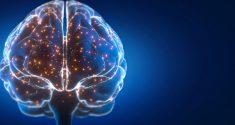Researchers at the RIKEN Center for Brain Science (CBS) have discovered how perceived memories associated with positive emotions such as joy or happiness are strengthened during sleep. The study, published in the journal Neuron, could help scientists understand the neurological basis for overcoming diseases such as drug or sex addiction.
How Information is Processed and Memories are Formed
Why do emotional events, whether positive or negative, elicit strong, long-lasting memories of external information such as music, smells and textures perceived during the events? We know that sleep is essential for memory consolidation, the process that turns new events into memories, but we don’t know how it plays a role in memory enhancement. Experiments have shown that emotional events can be processed differently depending on the phase of sleep, but it is still unclear which part of sleep is more important for their consolidation, REM sleep—the period during which we have vivid dreams—or non-REM sleep. The new study, led by Masanori Murayama at RIKEN CBS, was designed to answer this question.
 The researchers first created mouse equivalents of neutral and emotional events to examine what the brain does differently during sleep when emotions are involved. In a neutral situation, male mice were allowed to explore only a smooth texture on the first day of the experiment as a learning phase and both grooved and smooth textures the next day as a test phase. If their memory of the smooth texture was retained until the second day, they preferred to explore the grooved texture, but not the smooth one, because mice naturally like new environments.
The researchers first created mouse equivalents of neutral and emotional events to examine what the brain does differently during sleep when emotions are involved. In a neutral situation, male mice were allowed to explore only a smooth texture on the first day of the experiment as a learning phase and both grooved and smooth textures the next day as a test phase. If their memory of the smooth texture was retained until the second day, they preferred to explore the grooved texture, but not the smooth one, because mice naturally like new environments.
However, if the smooth texture was associated with a positive emotional experience – interacting with a female mouse – the memory of the texture was retained for much longer. Even with a four-day interval, the mice still preferred the smooth texture on the fifth day, demonstrating that this experimental setup can create emotionally-reinforced texture memory in mice. As Murayama explains, this is the first study to demonstrate an enhancement of long-term memory by emotion in laboratory animals.
The researchers identified the amygdala, the emotional center of the brain, as the key to this process. The amygdala is connected to a cortical top-down circuit from motor to sensory cortices, which controls the accurate perception and memory of texture information, as Murayama’s group had previously discovered. This tri-regional circuit strengthens emotionally linked memories. Brain imaging showed that these three brain regions were cooperatively activated during the learning phases and reactivated during early non-REM sleep, but not during REM sleep, to strengthen memory.
Developing Treatments that Improve Mental Health and Memory-Related Disorders
To test the importance of non-REM reactivation, the researchers temporarily prevented amygdala input to the motor cortex, which sends top-down input to the sensory area. When they did this during non-REM sleep, the mice were able to retain texture memory only on the fifth day, despite the emotional experience. In contrast, blocking the signals during REM sleep had no effect, confirming that non-REM sleep is the critical sleep phase for strengthening perceived memories. “Traditionally, REM sleep has been thought to be the primary phase for emotional memory processing,” Murayama says. The researchers’ findings challenge this idea and instead support non-REM sleep as the crucial phase.
This study not only explains how emotions enhance other types of memories (e.g. perception), but also points to possible treatments for disorders such as addiction, in which symptoms are sometimes triggered by perceived information in a phenomenon called flashback. Such information is thought to be strongly anchored in memory in conjunction with emotional events that occurred even long before the episodes. By modulating brain activity in the amygdala and related regions during non-REM sleep to weaken memories that trigger flashbacks, doctors could potentially prevent or treat addiction.
Future research will explore how these findings can be applied to disease models such as age-related memory loss or addiction. “For example, it will be important to investigate whether we can restore or even strengthen memories in older mice,” says Murayama. “Our ultimate goal is to use this knowledge to develop treatments that improve mental health and memory-related disorders.”






